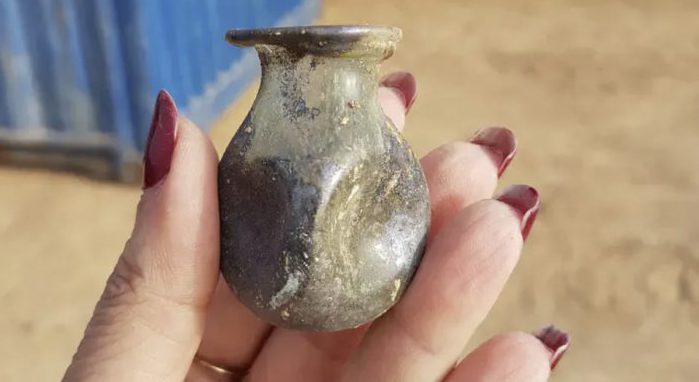Rare burial artifacts at Tel Malḥata reveal Christian-African cultural ties and ancient traditions of identity and memory.
Ancient unique finds in the South: Five tiny figurines – including heads of African figures carved in black wood – were uncovered in 1500-year-old graves of women and children during an archaeological dig at Tel Malḥata in the Negev’s Arad Valley.
The research on these findings, conducted by Dr. Noé D. Michael of the Israel Antiquities Authority and the University of Cologne in Germany, along with Svetlana Tallis, Dr. Yossi Nagar and Emil Aladjem from the Israel Antiquities Authority, is now published in Issue 117 of the Israel Antiquities Authority’s ʼAtiqot journal.
“The figurines show that a Christian community lived in the south of the country about 1,500 years ago, possibly with some of its members coming from Africa”, say the researchers. “Carved from bone, and from ebony wood – a rare raw material originating from southern India and Sri Lanka – the figurines were designed in the form of women and men bearing prominent African facial features, and with a hole for the purpose of wearing them around the neck. It seems their purpose was not only decorative – but also as intimate personal items carrying with them a story of identity, tradition and memory.”
Carefully placed in the tomb alongside women and children, the figurines were exceptionally well-preserved. According to the researchers, “It is possible that the figures represent ancestors, and thus they reflect traditions passed down from generation to generation – even after the adoption of the Christian religion.”
“During the Roman-Byzantine period, Tel Malḥata served as a major crossroads, where merchants from southern Arabia, India and Africa passed. Finding African figurines in local Christian graves is a rare discovery, which deepens our understanding of the cultural diversity among the inhabitants of the country in this region about 1500 years ago.”
Among the figurines placed as burial offerings were also glassware, stone and alabaster jewelry, and bronze bracelets. The tombs themselves attest to a traditional Christian burial, from the 6th-7th centuries CE.
“It is likely that a woman and a child who were buried side-by-side, and in whose graves two of the figurines were discovered, belonged to the same family – and perhaps they were even mother and son,” the researchers add.
According to Eli Escusido, Director of the Israel Antiquities Authority: “The finds from Tel Malḥata are moving not only from an archaeological perspective, but also on a human level. They serve as a reminder that the Land of Israel has always been a crossroads of cultures and peoples — individuals arrived here, integrated into the local population, and yet still carried with them traditions and beliefs from distant lands.”





